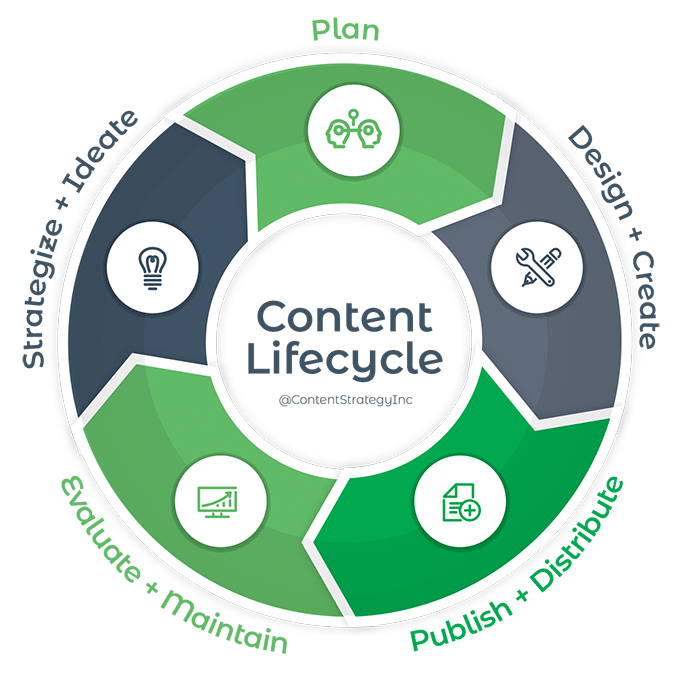Define the states in which your content can exist
We wrote previously about the benefits of designing and implementing a content maintenance plan. In order to maintain your content, you need to first define the states in which your content can exist throughout its entire lifecycle.
Content that is published may need to become archived, deleted, or something else
When you first publish a piece of content to your website, it exists as published content; it’s on your website and users can access it through search, navigation, or direct links.
But some content may need to be taken down once it has served its purpose. For example, a press release may become obsolete one year after it was issued. An event page may become irrelevant after the event is over. What happens to these pages then?
This is where it becomes useful to define the states in which your content may need to exist throughout its lifecycle. In the early stages of developing your content maintenance plan, defining these states will allow you to later define rules that will govern your content maintenance processes.
In the case of the press releases, you may decide to archive them. Depending on how your content management system (CMS) is set up, and on what you decide as a company, archiving a page could mean that:
- The page still exists online, but is moved to a press release archive on the website that visitors can still access.
- The page is removed from the website but stored in a repository in the back-end of your CMS, and visitors can’t access it.
- Something else entirely.
What you do will depend on how your CMS is configured and what it’s capable of, and also on how your organization decides to define what it means for a piece of content to be archived. Ultimately, the labels you choose, and how you define them, will depend on the needs of your organization.
Be sure to consider all the different stages of the content lifecycle (pictured below), as well as the different types of content your organization has on its website, and what the needs are for these different types.
Align your teams around terminology
Make sure there is alignment between the technical meaning of the labels you choose to define the different states of your content and their practical use.
For example, make sure that when your content team marks something to be archived, their understanding of what this means is the same as that of the web team who manages the CMS:
- Will the content become unpublished but live in a folder in the CMS?
- Will it still be available to users but marked as archived on the website?
- Will it still show up in a Google search, or is it no longer indexed by search engines?
Everyone should agree and be clear on what the different labels mean, and what will happen to the content once a given label is applied to a piece of content in the CMS.
An example from Canada.ca
The government of Canada has set out some guidelines for its own content maintenance, which is outlined on the canada.ca website. It distinguishes between three categories of web content.
- Current content: Information that is up-to-date, relevant, and required.
- Archived content: Information that is no longer current but is retained online for reference or to provide a context to current content.
- Legacy content: Information that has been revised or supplanted and that has been deleted from the site and moved into a corporate repository.
For their purposes, they have decided that content will exist in one of these three states at any given point throughout its lifecycle.
You’ve defined the states of your content. Now what?
Once you’ve established the states in which your content can exist, socialized the shared definitions throughout your organization, and configured your CMS, what happens next?
You can now move on to creating the rules that will make up the bulk of your content maintenance plan and determine what happens to your content, and when.
We’ll cover that in a future post.
